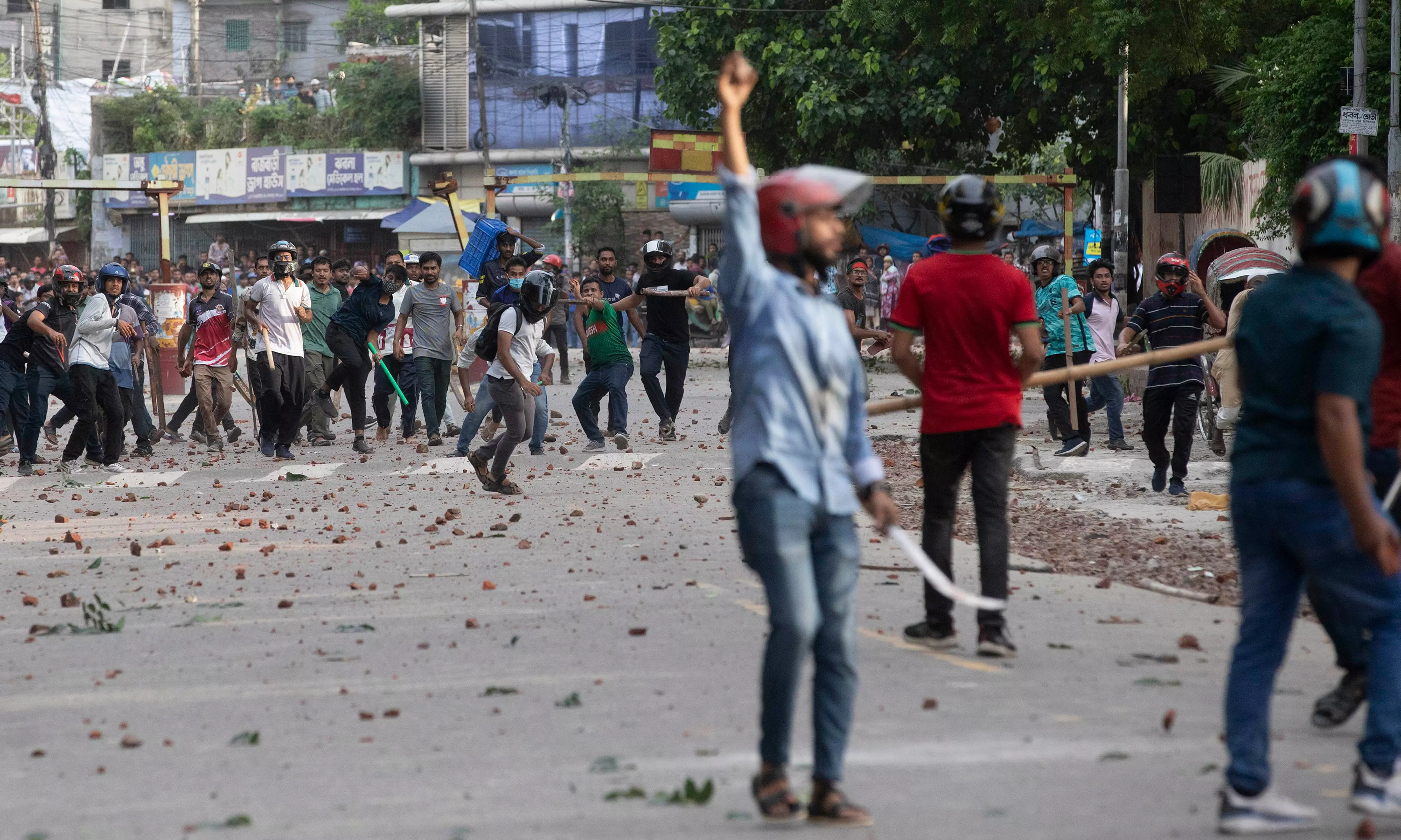
Explained: What has triggered protests in Bangladesh that have claimed 39 lives
The protests broke out last month after the High Court reinstated a quota system, reserving 30% of govt jobs for kin of freedom fighters and veterans from the 1971 War of Independence

At least 39 people have been killed and over 2,500 have sustained injuries in Bangladesh after clashes between students, government supporters and armed police following protests against service job quotas.
The protests broke out last month after the High Court reinstated a quota system, reserving 30% of government jobs for family members of freedom fighters and veterans from the 1971 War of Independence. However, the Supreme Court has since suspended the High Court's order and is set to hear the government's challenge on August 7.
Violence erupted across Bangladesh as police and protesters clashed in various parts of the country, including the capital, Dhaka. The protests, although going on for weeks, took an ugly turn on Wednesday when Prime Minister Sheikh Hasina appeared on TV to address the escalating clashes. However, her appearance on a national broadcasting channel seemed to have the opposite effect, as the demonstrators set fire to the country's state broadcaster building on Thursday.
In 2018, the quota system was scrapped by Prime Minister Sheikh Hasina's government following similar student-led protests.
What are the demands of Bangladesh protesters?
The protesters are unequivocal in their demand that the government scrap the quota system, which they claim benefits only the ruling Awami League party led by Sheikh Hasina. They have often accused Prime Minister Hasina, the daughter of Bangladesh's founding father Sheikh Mujibur Rahman, of using the reservation system to reward her party's loyalists. Protestors allege that the system is unfair and limits their job opportunities.
This time, protests have erupted six months into Hasina’s re-election for a record fourth-term, and she has adopted a stern approach to deal with the protesters. The prime minister has refused to accept their demands and instead referred to the protesters as “razakar”, an offensive term used to describe those who betrayed the country by collaborating with the Pakistani army in 1971.
What exactly is quota system in Bangladesh?
The quota system in Bangladesh was introduced in 1972 and has undergone several changes since then. Before it was abolished in 2018, the system reserved 56% of government jobs for various groups, but the majority of these quotas benefited freedom fighters’ families.
Of this 56% quota, 30% goes to kin of freedom fighters and veterans, 10% to women, 10% to underdeveloped districts, 5% to indigenous communities and 1% disabled people.
What has triggered the protests this time?
It was a high court order in June-end that triggered the current wave of protests. Petitioners, representing the children of the war veterans, had challenged the Hasina government’s order to scrap the job quota in 2021. The high court in its order restored the job quota for the descendants of the war veterans, immediately sparking protests.
However, Bangladesh’s Supreme Court on July 10 suspended the order for a month. The top court will hear the matter on August 7. Though the job quota for the children of war veterans is technically not applicable in Bangladesh at present but the protesters are demanding an executive order from the Hasina government stating that the policy to reward the third generation of war veterans would be replaced by a merit-based hiring system.
What is the job scenario in Bangladesh right now?
Like other Asian countries, there is a tough competition for government jobs in Bangladesh. As per an estimate, there are around 400,000 job-seeking graduates in the country for about 3,000 government jobs a year.
Bangladesh needs to fix its employment structure to address the issue as a large number of university pass-outs looking for jobs are forced to stay unemployed or under-employed. The job situation has become complicated in the recent times due to the struggle that Bangladesh’s economy has been going through, especially after COVID-19 pandemic.
Bangladesh is facing mounting economic challenges now, starkly different from its robust growth trajectory of previous years. The aftermath of the COVID-19 pandemic, coupled with global economic uncertainties including the Russia-Ukraine conflict, has left the nation grappling with significant setbacks.
Is the government holding a dialogue with the protesters?
Bangadesh’s Law Minister Anisul Huq has said the government was willing to hold talks with the protesters to resolve the matter.
However, the road to resolution of this contentious issue seems tough as protest co-ordinator Nahid Islam told Reuters, “Discussions and opening fire do not go hand in hand... We cannot trample over dead bodies to hold discussions”.
Frustrated with continued protests, Hasina too remarked on July 14, “Why do they (the protesters) have so much resentment towards the freedom fighters? If the grandchildren of the freedom fighters don’t get quota benefits, should the grandchildren of Razakars get the benefit?”

